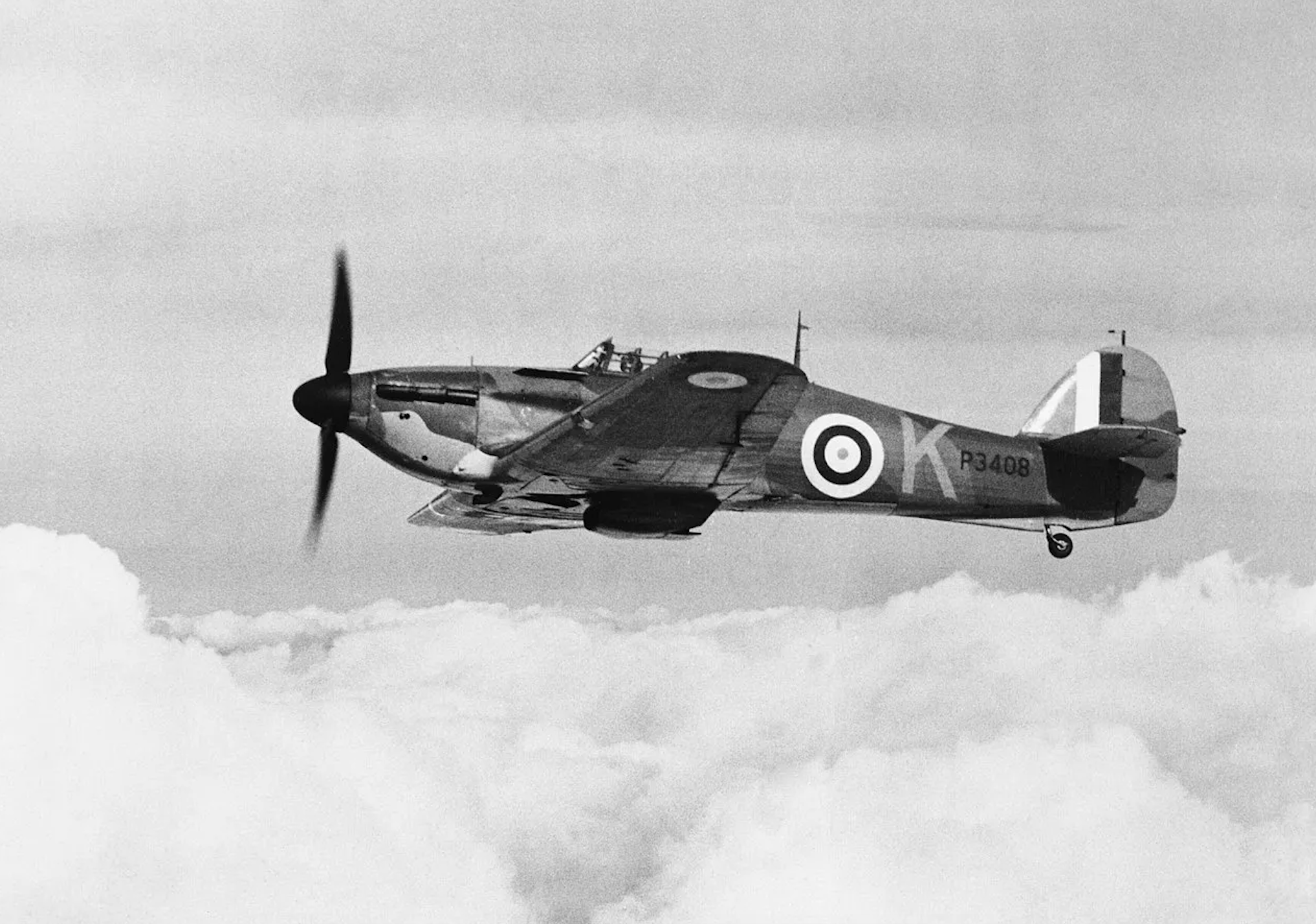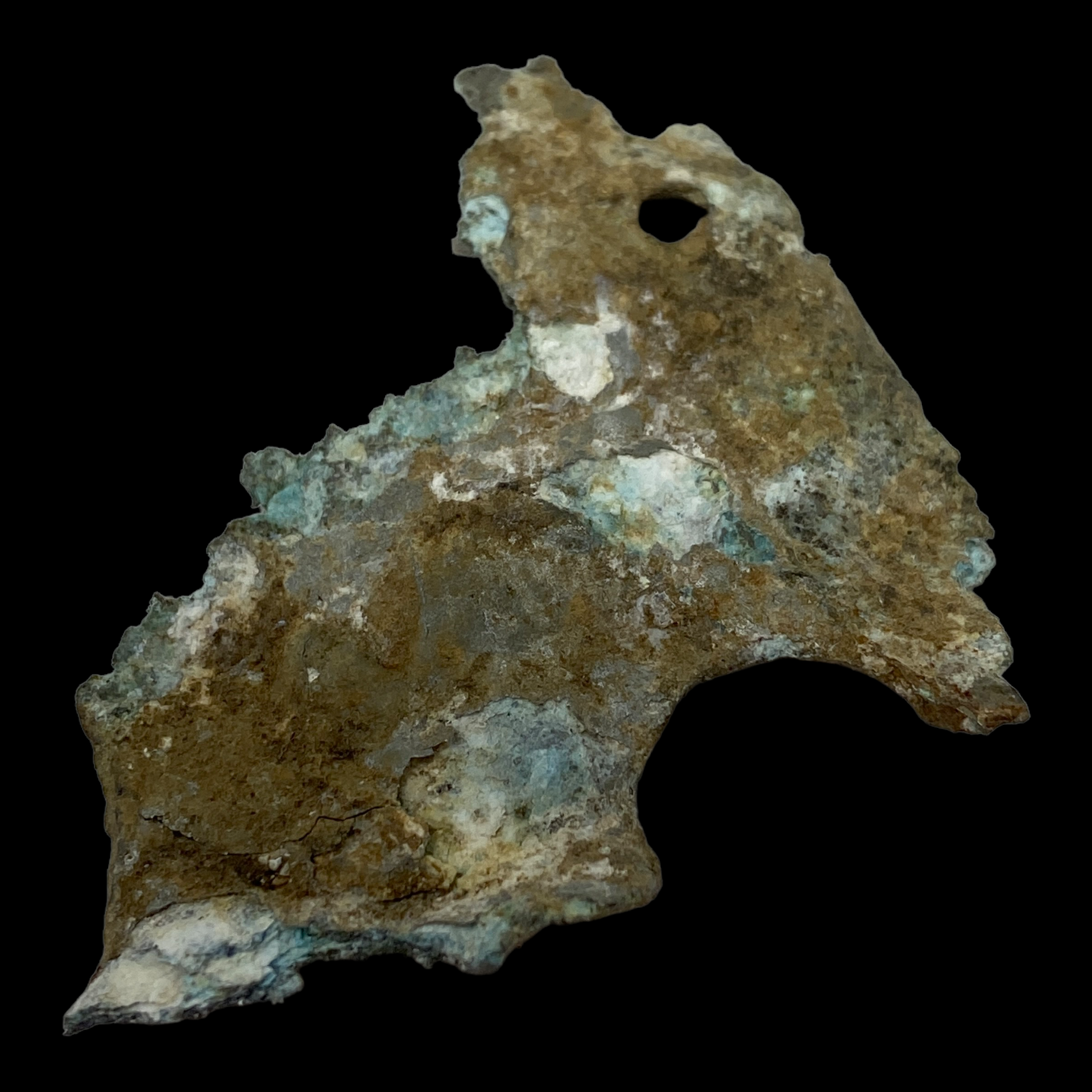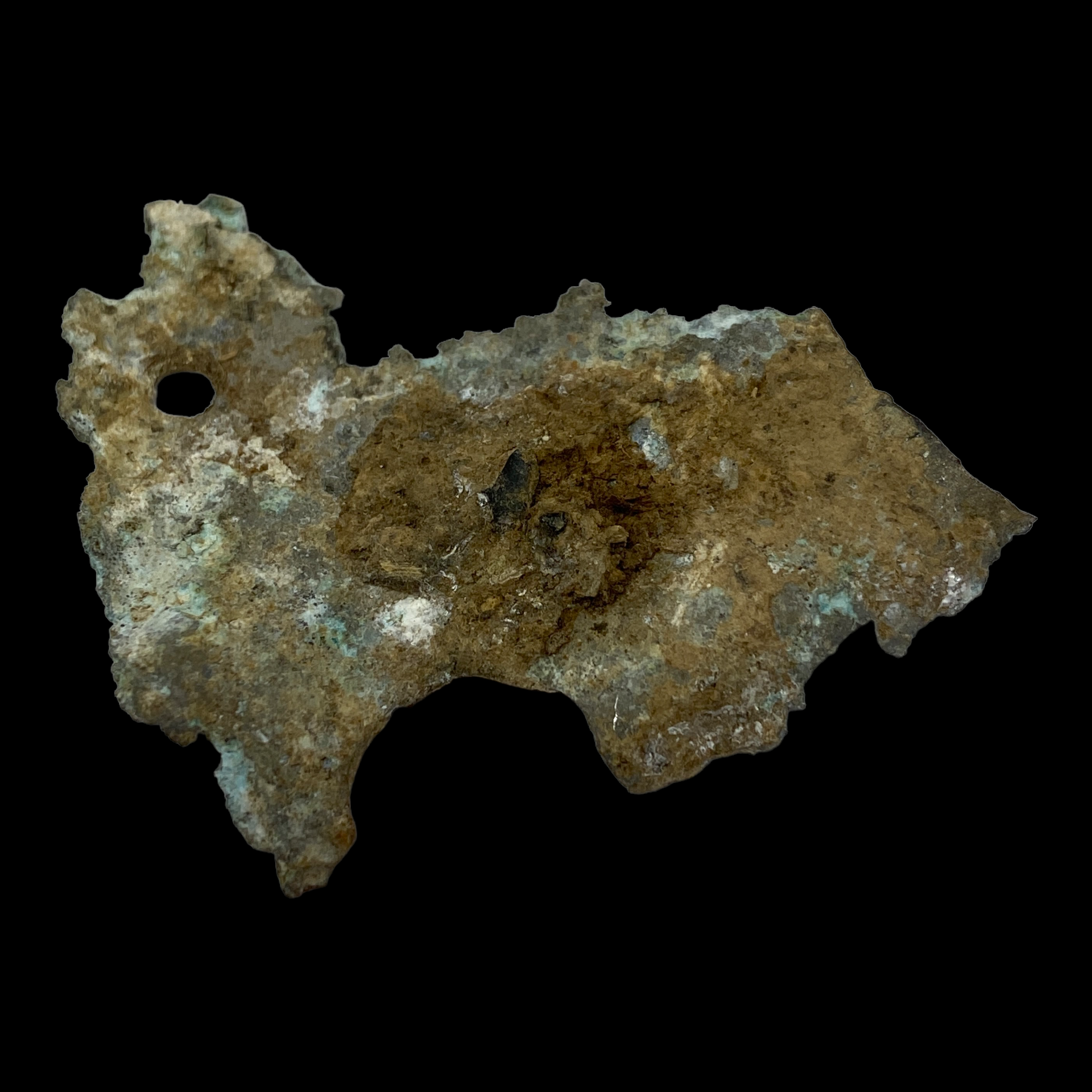RARE! WWII 1940 Battle of Britain Sergeant-Pilot Hugh Charles Adams SHOT DOWN R.A.F. British Hurricane Wreckage Fragment - Elham Recovered












RARE! WWII 1940 Battle of Britain Sergeant-Pilot Hugh Charles Adams SHOT DOWN R.A.F. British Hurricane Wreckage Fragment - Elham Recovered
Comes with hand-signed C.O.A.
R.A.F. HURRICANE METAL AIRCRAFT PLATTING/SKIN
This incredible rare and museum-grade WWII artifact is a Battle of Britain R.A.F. aircraft wreckage fragment from a British Hurricane of No. 501 Squadron.
This Royal Air Force British Hurricane was piloted by Sergeant-Pilot Hugh Charles Adams who was shot down during an air-to-air dogfight by a German aircraft on September 6th, 1940. Sergeant-Pilot Hugh Charles Adams crashed at Clavertye, near Elham where he was listed as KILLED IN ACTION.
Over the course of his service in the R.A.F. Sergeant-Pilot Hugh Charles Adams served valiantly in combat against German attacking planes during the Battle of Britain. Sergeant-Pilot Hugh Charles Adams was shot down multiple times…bailing out and surviving each time. His luck, however, would soon run out as Sergeant-Pilot Hugh Charles Adams was KILLED IN ACTION on September 6th, 1940.
This artifact of Sergeant-Pilot Hugh Charles Adams that was shot down near Kent is a testament to the R.A.F. pilots that gave their lives in defence of Britain. These smaller and medium-sized fragments of this R.A.F. Hurrican were preserved and salved during the salvage and recovery efforts of the aircraft.
Full Combat History of Sergeant-Pilot Hugh Charles Adams:
Hugh Charles Adams was born in Nottingham on 16th April 1918, son of John Coker Adams (barrister-at-law) and Grace Adams (née Clough) of Chaddleworth, Berkshire, formerly of Meadow Green, Welwyn Garden City. He attended Cheam School, Surrey before going on to Sherborne School (The Green House) from September 1932 to December 1936 where he was House Prefect, in the 2nd XI (1936), 1st Class Gym and Gym Squad (1935-36). On leaving he went into Engineering and moved to Chathill Cottage, Lower Tanbridge Lane, Oxted, Surrey. Adams joined the RAFVR in January 1938. Called up on 1st September 1939, he completed his training and joined 501 Squadron on 17th July 1940 as a Sergeant-Pilot.
He was flown to France, with other squadron personnel, in a Bombay transport on 11th May 1940. The aircraft crashed when it landed at Betheniville. Adams was among those injured and sent home. He rejoined 501 Squadron on 17th July 1940. Adams destroyed a Me109 on 2nd September and was then himself shot down in combat south of Ashford. On the 6th he was shot down and killed in action over Ashford. His aircraft crashed at Clavertye, near Elham. Adams was 22. He is buried in St Peter's churchyard, Tandridge, Surrey. His commission was gazetted on the day he was killed and in the casualty list he was down as 'Killed in Action' as a Sergeant.
The R.A.F. Hurricane and its role in the Battle of Britain:
The Battle of Britain was a pivotal moment in World War II, where the Royal Air Force (RAF) successfully defended against the German Luftwaffe's attempts to gain air superiority over Britain. The RAF's success can be attributed in large part to the effectiveness of their aircraft, particularly the Hawker Hurricane.
The Hawker Hurricane was a single-seat fighter aircraft designed and built by Hawker Aircraft Ltd. in the 1930s. The aircraft was developed to meet a specification put forth by the Air Ministry, which called for a monoplane fighter capable of reaching a speed of 300 mph at 15,000 feet. The Hurricane was designed to be fast, agile, and heavily armed, with eight .303 inch Browning machine guns mounted in the wings.
The Hurricane was first introduced to the RAF in December 1937, and by the start of the Battle of Britain in July 1940, the aircraft was the backbone of the RAF's fighter force. The Hurricane was a rugged and reliable aircraft that could withstand significant damage and continue to fly, making it an ideal aircraft for aerial combat. Its maneuverability and firepower made it a formidable opponent for the German fighters.
During the Battle of Britain, the Hurricane played a critical role in defending against the German Luftwaffe's attacks. The aircraft was tasked with intercepting incoming German bombers, particularly the Dornier Do 17 and the Heinkel He 111. The Hurricane's speed and firepower made it well-suited to this task, allowing pilots to close in on the bombers quickly and destroy them before they could release their payloads.
The Hurricane was also effective in engaging German fighters, such as the Messerschmitt Bf 109 and the Focke-Wulf Fw 190. While the Hurricane was not as fast or as maneuverable as these aircraft, its firepower gave it an advantage in head-on attacks, allowing pilots to shoot down enemy fighters before they could do the same.
One of the Hurricane's most significant contributions to the Battle of Britain was its ability to operate from makeshift airfields. The German Luftwaffe had targeted many of the RAF's airfields, rendering them unusable. However, the Hurricane was designed to operate from unprepared fields and could take off and land on rough ground, allowing the RAF to continue operating even when their airfields were under attack.
During the Battle of Britain, the Hurricane was responsible for shooting down the majority of the German aircraft destroyed by the RAF. Of the 2,739 German aircraft destroyed or damaged during the battle, 1,593 were attributed to Hurricanes. The aircraft accounted for 60% of the RAF's total victories, with pilots such as Douglas Bader, Ginger Lacey, and Robert Stanford Tuck becoming household names for their successes in the Hurricane.
In conclusion, the Hawker Hurricane played a critical role in the Battle of Britain, serving as the backbone of the RAF's fighter force and playing a significant role in the defense against the German Luftwaffe's attacks. The aircraft's speed, firepower, and ruggedness made it an ideal aircraft for aerial combat, while its ability to operate from unprepared fields allowed the RAF to continue operating even when their airfields were under attack. The Hurricane's contributions to the Battle of Britain cannot be overstated, and the aircraft remains a symbol of the RAF's success in defending against the German Luftwaffe during the early years of World War II.